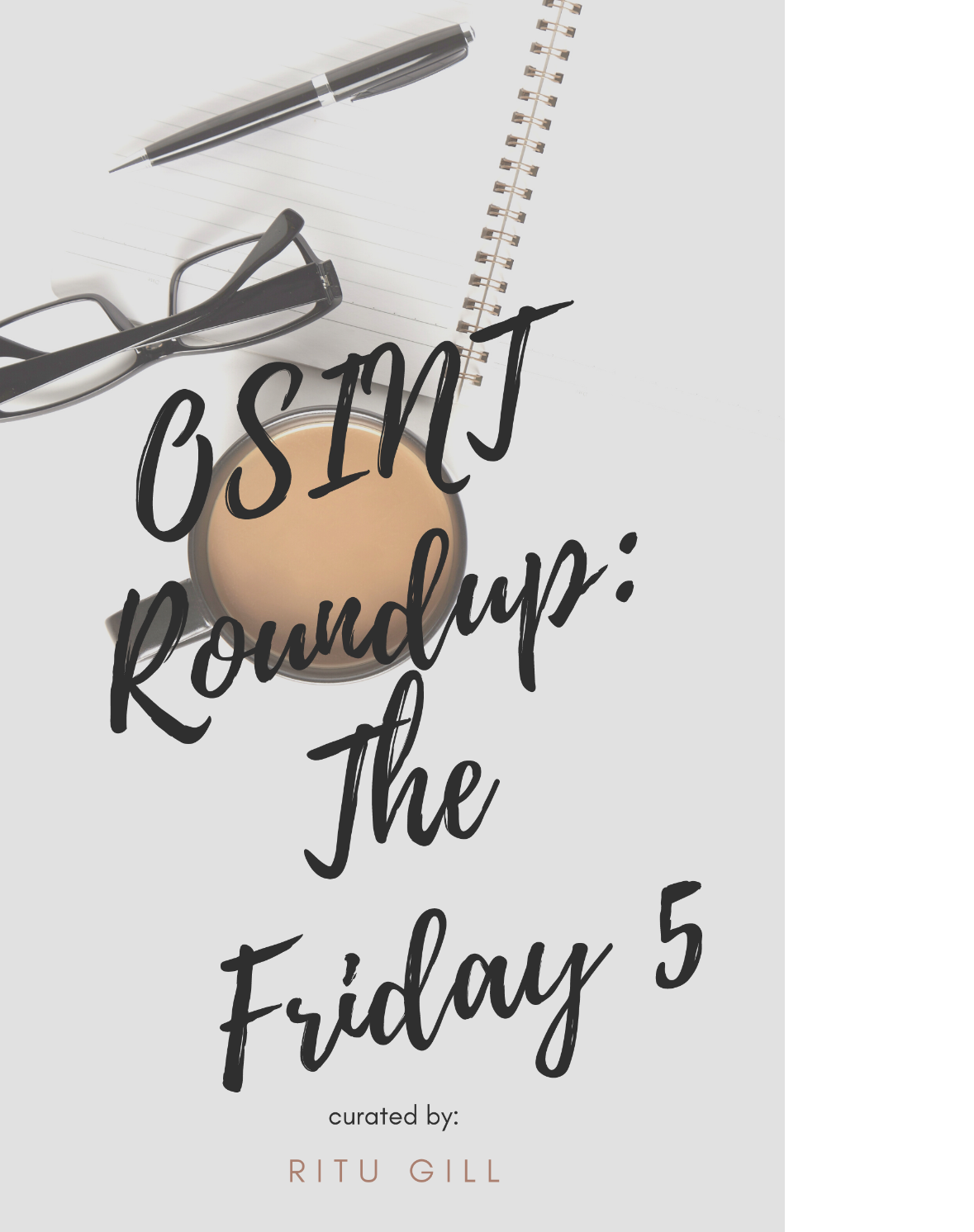What is OSINT?
Open Source Intelligence (OSINT) refers to the systematic process of gathering, evaluating, and analyzing publicly available information from a wide range of sources to extract meaningful insights and answer specific intelligence queries.
This approach involves harnessing information from publicly accessible platforms such as:
- Social media
- Websites
- News articles
- Online forums
- Academic publications
- Other open resources
The purpose of OSINT is to analyze information and turn the data into actionable intelligence through analysis that can inform:
- Decision-making
- Investigations
- Security operations
- Strategic planning
Information versus Intelligence
It's essential to differentiate between information and intelligence within the context of OSINT.
While information comprises the raw data obtained from various sources, intelligence results from the careful analysis and interpretation of this data.
This process aims to extract:
- Relevant patterns
- Relationships
- Trends
- Implications
In other words, OSINT involves more than just amassing data; it involves:
- Applying critical thinking
- Contextual understanding
- Analytical methodologies
to transform this data into valuable insights.

For instance, when conducting OSINT, the focus isn't solely on accumulating data points, such as saving a list of Facebook friends.
Instead, it's about sifting through information to identify pertinent details that directly address the intelligence question at hand.
OSINT might involve:
- Uncovering connections between individuals
- Tracking the evolution of a particular topic over time
- Identifying emerging trends
- Assessing the credibility of sources
A crucial aspect of OSINT is understanding the significance of collected data.
This involves:
- Contextualizing the information
- Determining its relevance
- Discerning how it contributes to a broader understanding of the intelligence objective
OSINT should be able to provide insights into the "why" behind the data's importance, highlighting its implications and potential consequences.
Open Source Information
Open source information encompasses content accessible through a variety of sources, including:
- Public Records
- News media
- Libraries
- Social media platforms
- Images, Videos
- Websites
- The Dark web
Who makes use of OSINT?
Open source resources are ingrained in our daily lives, often without us realizing it, and they serve diverse purposes.
Open source information is frequently employed by:
- Government
- Law Enforcement
- Military
- Investigative journalists
- Human rights investigators
- Private Investigators
- Law firms
- Information Security
- Cyber Threat Intelligence
Open source information is used for tasks such as:
- Verifying credibility
- Gaining insights into someone you're considering purchasing from on platforms like Facebook Marketplace
It's also utilized to:
- Conduct research on individuals encountered through dating apps
- Evaluate potential job candidates
Intelligence Cycle
Delving into the Intelligence Cycle and its implications for those engaged in OSINT, it becomes evident that the cycle's various stages offer a structured framework for effective open source research.
While slight variations might exist in different versions of the cycle, its fundamental steps remain consistent.
The Intelligence Cycle is composed of the following stages:
1. Preparation: This phase entails a meticulous assessment of the requisites and objectives of the task at hand. It involves:
- Defining the scope
- Setting the goals
- Pinpointing the optimal sources for extracting the targeted information
2. Collection: The core of the cycle, collection involves the systematic acquisition of data and information from a diverse array of pertinent sources. This step is pivotal in assembling a comprehensive dataset to serve as the foundation for subsequent analysis.
3. Processing: The acquired data and information undergo a process of organization and collation during this stage. Structuring the collected material ensures its readiness for the forthcoming analytical procedures.
4. Analysis and Production: Here, the emphasis shifts from data accumulation to interpretation. Analysts engage in:
- Deciphering the collected information
- Uncovering latent patterns, timelines, or relationships
This phase endeavors to provide meaning to the amassed data, resulting in insights that can answer the intelligence questions posed. The culmination of this step is the creation of a comprehensive report that not only addresses the inquiries but also draws informed conclusions and offers recommendations for further action.
5. Dissemination: The findings of the OSINT research are presented and delivered during this final stage. This might take the form of:
- Written reports
- Graphical representations
- Timelines
- Recommendations
The goal is to provide the answers required by stakeholders, thereby facilitating informed decision-making based on the intelligently derived insights.
The Intelligence Cycle serves as a roadmap for the effective execution of OSINT endeavors.
It demonstrates a sequence of interdependent stages, each contributing to the ultimate objective of transforming raw data into actionable intelligence.
Through adept application of the cycle, practitioners can navigate the complexities of open source research, culminating in the delivery of valuable insights to support various operational, strategic, and investigative objectives.
Understanding Passive and Active OSINT
Knowing the difference between passive and active OSINT research is important, as they affect how you interact online. Let's break down what each one means.
Passive OSINT: This is like watching without talking. It means you collect information from public sources, like social media, without joining conversations or sending messages.
Active OSINT: This is when you get involved. You might:
- Send friend requests
- Comment on posts
- Chat with people online
It's like joining the conversation.
Active open-source research is considered engagement and can be looked upon as an undercover operation for some organizations. If you're engaging in active OSINT, it's important to look like a regular person. That might mean having online accounts on multiple platforms.
Passive and active OSINT are two ways to find information online. They both have their good sides, but it's important to know what your organization thinks is okay.
Balancing watching from afar and being part of the action depends on:
- Clear rules
- Talking with your superiors
How OSINT Can Help Your Organization
Using Open Source Intelligence (OSINT) can benefit your organization in these ways:
- Advancing Investigations: OSINT gives background information about people and businesses, helping with criminal investigations.
- Human Source Assessments: OSINT assists in gaining deeper insights into human sources by performing investigations to discover their digital presence and analyze their online behavior.
- Finding Risks: OSINT helps see possible dangers by looking at open information sources for security assessments.
- Deciding Smarter: OSINT provides more information to make better decisions about situations, people, or groups.
- Connecting Dots: OSINT helps see connections between different things or people, revealing hidden links.
- Being Aware: By using open sources, it can assist with finding out what is currently happening right now, helping your organization stay prepared.
Conclusion
In an era where information is both a commodity and a weapon, Open Source Intelligence (OSINT) stands as a pivotal tool for organizations and individuals alike. By harnessing the vast expanse of publicly available data, OSINT not only democratizes access to information but also empowers users to make informed decisions, conduct thorough investigations, and stay ahead of emerging trends and threats.
Whether through passive observation or active engagement, the methodologies of OSINT offer a nuanced approach to intelligence gathering. They provide a framework for transforming scattered data points into coherent, actionable insights. This transformation is not merely about collecting information but about understanding its deeper implications and leveraging it strategically.
As we've explored, OSINT's applications are broad, touching everything from national security to personal safety, from corporate strategy to journalistic integrity. Its significance lies in its ability to reveal patterns, connections, and insights that might otherwise remain hidden, thereby enhancing decision-making processes across various sectors.
However, with great power comes great responsibility. The ethical considerations of OSINT cannot be understated. As we navigate this digital landscape, it's crucial to balance the pursuit of knowledge with respect for privacy, legality, and ethical standards. Organizations must establish clear guidelines and protocols for OSINT practices to ensure they are conducted responsibly and effectively.
In conclusion, OSINT is more than just a set of techniques or a cycle of processes; it's a mindset that encourages critical thinking, curiosity, and a proactive approach to understanding the world around us. By mastering OSINT, we not only gain the ability to see beyond the surface but also equip ourselves with the foresight to anticipate and adapt to the ever-evolving challenges of our interconnected world.
Conclusion
In an era where information is both a commodity and a weapon, Open Source Intelligence (OSINT) stands as a pivotal tool for organizations and individuals alike. By harnessing the vast expanse of publicly available data, OSINT not only democratizes access to information but also empowers users to make informed decisions, conduct thorough investigations, and stay ahead of emerging trends and threats.
Whether through passive observation or active engagement, the methodologies of OSINT offer a nuanced approach to intelligence gathering. They provide a framework for transforming scattered data points into coherent, actionable insights. This transformation is not merely about collecting information but about understanding its deeper implications and leveraging it strategically.
As we've explored, OSINT's applications are broad, touching everything from national security to personal safety, from corporate strategy to journalistic integrity. Its significance lies in its ability to reveal patterns, connections, and insights that might otherwise remain hidden, thereby enhancing decision-making processes across various sectors.
However, with great power comes great responsibility. The ethical considerations of OSINT cannot be understated. As we navigate this digital landscape, it's crucial to balance the pursuit of knowledge with respect for privacy, legality, and ethical standards. Organizations must establish clear guidelines and protocols for OSINT practices to ensure they are conducted responsibly and effectively.
In conclusion, OSINT is more than just a set of techniques or a cycle of processes; it's a mindset that encourages critical thinking, curiosity, and a proactive approach to understanding the world around us. By mastering OSINT, we not only gain the ability to see beyond the surface but also equip ourselves with the foresight to anticipate and adapt to the ever-evolving challenges of our interconnected world.

Minimum Requirements:
- 8 Characters
- 1 Upper
- 1 Lower
- 1 Digit


